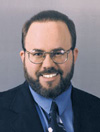The Washington Quarters of 1934
Posted on 8/1/2004

With so many collectors discovering the Washington quarter series in the past few years, it's odd that little interest has been shown in the three subtypes of 1934. It's well documented that three distinctive obverse hubs were used for the Philadelphia Mint quarters that year, and two of those three were used for the Denver Mint issues as well. Though this information is readily available in Walter Breen's Complete Encyclopedia of U.S. and Colonial Coins and John Feigenbaum's The Complete Guide to Washington Quarters, collectors have been slow to seek more than one coin of each mint.
When introduced in 1932 to commemorate the bicentennial of George Washington's birth, this coin type possessed an obvious technical flaw. Unaccustomed to the low relief and single impression typical of mass produced coins, medallist John Flanagan cut the motto "IN GOD WE TRUST" too softly on his obverse model. Weak even on uncirculated pieces, this lettering was destined to disappear completely after a few years in circulation. Nevertheless, this obverse was used for all of the 1932 quarter dollar coinage from each of the three mints.
Though no quarters were produced the following year, the U.S. Mint's engraving staff recognized this design flaw, and only a very small number (Breen estimated 500,000 pieces) of the 1934 Philadelphia Mint quarters were coined from obverse dies taken from this first hub. Another obverse hub was introduced early that year and was utilized for most of the P-Mint quarters that year (Breen estimated about 28 million coins). This hub featured a much sharper motto, but one in which the letters were quite slim. As this contrasted with the rather heavy lettering used by Flanagan throughout his models, yet another obverse hub was introduced very late in the year that included a similarly sharp but much thicker motto (it is easily recognized because the middle vertex of the letter W in "WE" projects above the left and right strokes). Breen estimated that perhaps 3.4 million 1934 Philadelphia Mint quarters were made from this third hub but, as was often the case in his writing, he provided no source or reasoning for this figure. Even so, his estimates seem to be in keeping with the frequency with which each subtype is observed, though I believe the third hub to be rarer than his figures suggest.
For reasons we can only guess at today, the Mint reverted to the second obverse for the entire coinage of 1935 from all three mints. In 1936, the third obverse was used exclusively, and only very subtle changes were made from that point through the end of silver coinage in 1964.
After the brief issue of 1932, the coining of the quarters at the Denver Mint did not resume until several months into 1934, by which time the first obverse hub had been discarded. The 1934-D quarters therefore appear only with the second and third obverse hubs. Breen estimates their production at one million and 2.5 million pieces, respectively. In my own observation, I've found the second obverse to be more common for this issue, and I would reverse his estimated figures. More study is needed to determine the correct relative rarity and whether each obverse exists with both the Small D mintmark puncheon used 1917-34 and the Large D of 1933-79.
The first obverse hub of 1934 is commonly known as the Light Motto. The second and third obverse subtypes typically are lumped together by collectors and dealers, though the more alert numismatists distinguish these as Medium Motto and Heavy Motto. These three obverse subtypes may also be described as the Type of 1932, the Type of 1935 and the Type of 1936, respectively. At present, only the Light Motto, or Type of 1932, quarters bring any premium. In my role as variety attributor for NGC, I will distinguish these three types under NGC's VarietyPlus service, but the fact of the matter is that only the Light Motto quarters are submitted for such attribution. Oftentimes, the submitter doesn't even realize that he has the valuable Light Motto quarter, and it's NGC graders who take the initiative to identify it as such. There also appears to be no interest among collectors and dealers in distinguishing the two subtypes of 1934-D quarters, though I suspect that the more sophisticated collector is quietly seeking all five subtypes of 1934 P and D quarters.
I'll leave you with one last observation regarding the fascinating quarters of 1934. A fact I've never seen mentioned in print and which may have escaped observation to this point is that the original reverse hub of 1932 was never used after that date. It featured a much higher border that shielded the reverse from the rapid wear typical of all later issues through the end of silver coin production. This distinction is very difficult to discern from the uncirculated coins that most collectors seek, yet it becomes readily apparent when studying worn pieces. 1932 quarters from all three mints wear quite evenly front and back, while silver issues 1934 and later will still show complete obverse borders long after the reverse border is worn deeply into the lettering. This is true even of the 1934 Light Motto quarters.
David W. Lange's column "USA Coin Album" appears monthly in Numismatist, the official publication of the American Numismatic Association.
Stay Informed
Want news like this delivered to your inbox once a month? Subscribe to the free NGC eNewsletter today!
